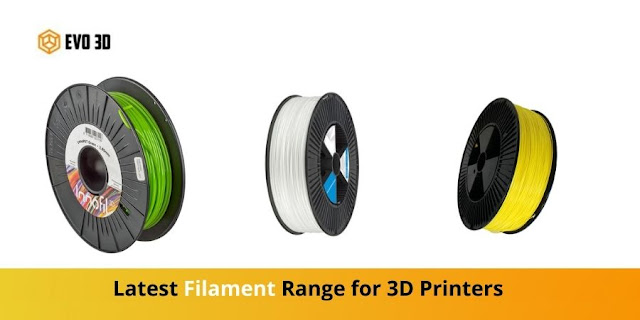Filament for 3D Printers: Everything You Need to Know
If you are reading this, chances are you have already bought, or are thinking of buying, a 3D printer. Regardless of these situations, once you select a 3D printer, you will have to look at different filament varieties and decide which one will suit your purpose.
To start with, filaments are manufactured in a large variety of materials. This, combined with the countless options in colour, can make it somewhat complicated to make the right selection.
Just a glance on an internet search reveals several complex names with what appears to be an alphabet soup. But don’t feel overwhelmed by all these terms because few of these are in common use and their manufacturers offer them under names that are easier to understand.
What a Filament for 3D Printers is Made of
Here, we will talk about the basics of filament for 3D printers and the most popular ones in use by a majority of 3D printer users.
Most filaments are polymers or thermoplastics - plastics that don’t burn when heated; they melt to form the desired shape as directed by the 3D printer nozzle. You can mould them and leave them to cool and solidify.
The 3D printing process involves feeding the filament into a section within the printer’s extruder assembly that heats it to its melting point. The filament is then squeezed (extruded) through a metal nozzle while tracing a programmed path from a 3D object file to construct the desired object. This method is known by two names - FDM (Fused Deposition Modelling) and FFF (Fused Filament Fabrication).
3D printer models come with one or two extruders. If you want to print something in an industrial metal 3D printer in multiple colours simultaneously, then a dual-extruder model may be a better fit. Their filaments are available in different weights, ranging from half a kilo to a few kilos. These are also made in two thicknesses with the weights mentioned in metric units.
Well-Known and Used Filament for 3D Printer Range
Now, here’s a look at some of the most commonly used types of filament for 3D printers:
ABS and PLA are extremely popular materials; in fact, a majority of basic 3D printers are built to use only these two. This shouldn’t pose a problem since they are both readily available and extremely affordable in comparison with other materials.
ABS stands for Acrylonitrile Butadiene Styrene, whereas PLA stands for Polylactic Acid. ABS is the material Legos are made of due to the material’s durability and non-toxic properties. It melts at around 210-250 degrees Celsius and the products you 3D print from it tend to have their bottom corners slightly turn upward.
This is particularly true in the presence of a non-heated print bed. ABS also tends to release a pungent, repulsive odour, so users recommend using it with a closed-frame printer in a place with proper ventilation after you are done with the industrial 3D scanner.
PLA or Polylactic Acid is different from ABS in many ways. It melts quicker than ABS, within the temperature range of 180-230℃. PLA is also biodegradable as it is made from plants and is harder as compared to ABS.
Moreover, it doesn’t warp during use and offers greater convenience most of the time. For these reasons, 3D printer users choose PLA as the base material when they are using a more exotic filament for 3D printers.
Nylon is also quite popular as a 3D printing filament, which is no surprise given its versatility and widespread use in everyday products, from toothbrushes and clothing to tires and parachutes. It also has a higher melting point than most of the other plastic-based materials and is a highly economical filament for 3D printers.
However, it is unsuitable for some 3D printers due to their greater melting point as their extruders have certain substances that are also affected by much higher levels of heat. Nylon is a bit similar to ABS in terms of warping but this issue is often resolved with the help of a heated print bed.
Other filaments include the following:
Flexible filaments: Thermoplastic Elastomers such as Thermoplastic Polyurethane (TPU)
Soluble filaments: High-Impact Polystyrene (HIPS), PolyVinyl Alcohol (PVA)
Composite filaments: Wood, sandstone, limestone, carbon fibre, and more.
Resin filaments



Comments
Post a Comment